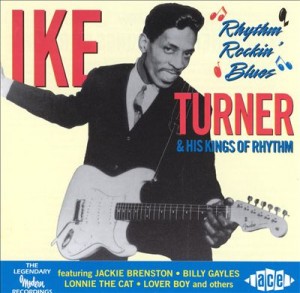🎸 Ritchie Valens – The Boy Who Brought “La Bamba” to Rock and Roll
Before there was Carlos Santana or Los Lobos, there was a teenager from Pacoima, California who dared to plug a traditional Mexican folk tune into an amplifier and watch the crowd go wild. That kid was Ritchie Valens, and though his career lasted less than two years, his influence on rock and roll still echoes today.
🌟 A Meteoric Rise
 Born Richard Steven Valenzuela on May 13, 1941, in the San Fernando Valley near Los Angeles, Ritchie was raised in a working-class Mexican-American family where music flowed through the walls like electricity. His father had played alongside big names like Nat King Cole and Bing Crosby, and his mother loved to sing. Ritchie picked up the trumpet at age five, then switched to guitar at eight, teaching himself chords by watching others and flipping a right-handed guitar upside down to play lefty.
Born Richard Steven Valenzuela on May 13, 1941, in the San Fernando Valley near Los Angeles, Ritchie was raised in a working-class Mexican-American family where music flowed through the walls like electricity. His father had played alongside big names like Nat King Cole and Bing Crosby, and his mother loved to sing. Ritchie picked up the trumpet at age five, then switched to guitar at eight, teaching himself chords by watching others and flipping a right-handed guitar upside down to play lefty.
By his mid-teens, he was already performing at local dances and school assemblies. He joined a band called The Silhouettes, but it wasn’t long before he outgrew it. In 1958, a talent scout brought him to the attention of Bob Keane, head of Del-Fi Records, and Valens was whisked into the studio. Keane suggested shortening his name to “Ritchie Valens”—and just like that, a star was born.
🎶 Breaking Barriers with Every Note
Ritchie didn’t just play rock and roll. He redefined it.
At a time when the genre was still finding its sound—and still considered “race music” by many—Valens delivered something that transcended cultural lines. His hit “La Bamba” fused a centuries-old Mexican folk song with the rhythm and drive of electric guitar-driven rock. It was upbeat, rebellious, and undeniably catchy. And it had lyrics in Spanish—a first for American Top 40 radio.
That was revolutionary.
Ritchie wasn’t just playing music. He was bridging cultures, languages, and races. He made it okay for kids with immigrant roots to see themselves in rock and roll.
🎥 Watch: Ritchie Valens – La Bamba (1958)
📀 The Hits That Made History
His first single, “Come On, Let’s Go” (1958), was a local hit and hinted at the energy he would bring to rock’s early days.
Then came “Donna”—a heartfelt ballad dedicated to his high school sweetheart. Released just weeks later, it climbed to #2 on the Billboard Hot 100, and it remains one of the era’s most tender love songs. On the flip side of that 45? “La Bamba.” One single, two legends.
Ritchie was just 17 years old.
Other tracks like “Fast Freight” and “That’s My Little Suzie” followed, but it was “La Bamba” that made the biggest mark. It didn’t just chart—it changed the game.
🕊 The Day the Music Died
Tragically, Ritchie’s star burned fast.
On February 3, 1959, after a Winter Dance Party performance in Clear Lake, Iowa, Valens boarded a small chartered plane with Buddy Holly and J.P. “The Big Bopper” Richardson. The plane crashed shortly after takeoff, killing everyone onboard.
He was only 17 years old.
That day would come to be known as “The Day the Music Died”, immortalized in Don McLean’s “American Pie.” But Ritchie’s music lived on—through covers, tributes, and the generations of Latino rockers he inspired.
🎤 Legacy of a Legend
Ritchie Valens was posthumously inducted into the Rock and Roll Hall of Fame in 2001, and his story was brought to life in the 1987 film “La Bamba,” with Lou Diamond Phillips playing the lead. The film—and its soundtrack by Los Lobos—helped a whole new generation discover his work.
He was also honored by the Latin Music Hall of Fame, and he remains a symbol of pride for the Mexican-American community and fans of early rock everywhere.
🎧 Final Thoughts: A Star That Shined Bright
Ritchie Valens packed more cultural impact into 18 months than most artists do in a lifetime.
He gave rock and roll a new voice, one with a little Spanish flair and a whole lot of heart. And though he left too soon, his influence is everywhere—from the first Latin-infused rock tunes to today’s boundary-breaking artists.
🎵 He didn’t just stand on the stage. He stood for something bigger.
He stood for inclusion, innovation, and the idea that anyone with a guitar and a dream could change the world.





